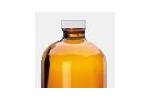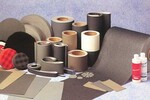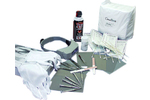- ▶
- Heaters/Source
- ▶
- Agilent Heaters and SensorsMass Spectrometry, Scientific Supplies & ManufacturingScientific Instrument Services 5973 Source Heater Tamper Resistant Allen Wrench 5973/5975 Quad Sensor 5985 Source Heater Assembly Agilent Interface Heater Assembly 5971 Interface Heater

- ▶
- MS Instrument Cleaning Supplies
- Lab/CleanMicro-Mesh® (Fine Cushioned Abrasive) Aluminum Oxide Cleaning Abrasive Fiberglass Cleaning Brushes Swabs and Applicators Nylon and Latex Gloves Cleaning Wipes SIS MS Source Cleaning Kits Dust-Off® Hurricane Canless Air System Wheaton Bottles Wheaton Vials Wheaton Closures Sterile Vials - Bottle, Stopper, and Cap - All Together Certified Sterile Kimble Chase Clear Serum Vials Soil Sampling Kits Crimpers and Decappers Temperature Measurement & Recording Devices Bullet Blender® Homogenizer The SW 110 Multi-Purpose Spot Welder New Era Syringe Pump Systems Ohaus MB Series Moisture Analyzers Celestron® Handheld Digital Microscope (HDM) Checkit® Pipette Accuracy Test Greenwood Lab Supplies Next Advance Lab Products Catalog Page G1

- ▶
- Micro-Mesh®Sheets Rolls Discs Pads Nail Files Tufbuf Micro-Gloss Tape Belts Sanding Swabs Polishing Tool Quick-Shine Buffers Kits - Plastic (power) Kits - Plastic (hand) Kits - Craftsman, Wood, Metal Kits - Automotive & Headlight Restoration Kits Kits - Aircraft Window Reference - Grit Size Reference - MSDS Sheets, Brochures, Instructions, Kits Print Catalog - Micro-Mesh Catalog Page A63 Catalog Page A64 Catalog Page A65 Catalog Page A66 Catalog Page G3 Catalog Page G4 Catalog Page G5 Catalog Page G6 Catalog Page G7 Catalog Page G8

- LiteratureApplication Notes Adsorbent Resins Guide Mass Spec Tips SDS Sheets FAQ MS Calibration Compound Spectra Manuals MS Links/Labs/ Organizations MS Online Tools Flyers on Products/Services Scientific Supplies Catalog About Us NextAdvance Bullet Blender® Homogenizer Protocols Micro-Mesh® Literature Instrumentation Literature Agilent GC/MS Literature SIS News / E-Mail Newsletter NIST MS Database - Update Notifications

- ▶
- Reference - MSDS Sheets, Brochures, Instructions, KitsMicro-Mesh Regular - Description of Micro-Mesh Regular Micro-Mesh MX - Description of Micro-Mesh MX for Metal Finishing Benefits of Micro-Mesh - What Makes Micro-Mesh So Special Ergonomic Benefits of Micro-Mesh - Human Factors, Engineering and Micro-Mesh TufBuf Polishing Pads - Polishing and Buffing Pads Guidelines for Acrylic Finishing Guideline for Making Belts with Micro-Mesh Micro-Gloss Instructions Metal Finishing with Micro-Mesh Random Orbital sanding with Micro-Mesh Solid Surface Finishing with Micro-Mesh Urethane Coating rectification Procedures Wood Finishing Procedures with Micro-Mesh Micro-Mesh Grit Size Conversion Chart Aquarium Restorer Kit Instructions Belt Finishing with Micro-Mesh Burn Kit Instructions Clear Seas Acrylic Kit Instructions Clear Seas Vinyl Kit Instructions Craft Kit Instructions Heavy Damage Removal Kit Instructions Light Damage Removal Kit Instructions KR-70 Acrylic Restoration Kit Instructions Maintenance Kit Instructions Micro-Mesh Anti-Static Cream Final Finish Micro-Finish Micro-Gloss Micro-Gloss # 5 TufBuf Polishing Pad

- ▶
- Random Orbital sanding with Micro-Mesh (This Page)
Random orbital sanders (ROS) move in repetitive forward-left-back-right strokes. The forward left motions often are the most aggressive strokes and may leave semi-circular "fish hook" scratch patterns. The completed motion leaves an elliptical scratch pattern often visible as swirl marks or uneven finishes.
MICRO-MESH , a cushioned abrasive, is designed to allow the abrasive crystals to float on soft "cushioned" backing. The micron-graded crystals recede to a common level and tend to rotate slightly when pushed against the surface. This action causes a uniform level planing action on the surface and contributes to long, even abrasive life.
Sanding in a straight-line pattern with MICRO-MESH and a belt sander or sanding block keeps the abrasive crystals set with a positive rake. When used with a ROS, the abrasive crystals plane on the forward stroke, are skewed slightly on the right stroke, plane backward on the back stroke and are skewed slightly again on the left stroke.
Since the abrasive crystals give a more uniform scratch pattern in the forward and backward stroke, it is better to use a small orbit. The smooth forward and back strokes are short, the skewed side to side motion is minimized. The speed of the orbital can be increased to compensate for the small orbit.
Random Orbital Sanders
Rotation speeds vary from 3,000 to 15,000 rpm depending on manufacturer. The orbit size front and back, left to right also varies with manufacturer and use. Typical orbits are 3/32", 1/16" and 1/4".
An 8,000 to 12,000 rpm ROS machine with a 3/32" orbit generally works well with MICRO-MESH for most soft surfaces. Using a larger orbit (1/8" to 3/16") with a much slower orbit speed (3000 to 5000 rpm) has been used successfully for sanding paint finishes and gel coats. Call 1-800-225-3006 for recommendations regarding your specific finishing operation.
Common finishing problems
Ripples and swirls are typically caused by sanding with an uneven motion, tilting the sander, or working in one spot too long. For best results, sand smoothly with even sweeping motions. On curved surfaces it may be possible to purchase pads that match the curves to be done.
Micro-Mesh
MICRO-MESH discs and sheets are available in Regular and MX grades (see conversion chart) with loop or pressure sensitive adhesive (PSA) backing. We strongly recommend the use of hook & loop systems due to the long useful life of the unique cushioned abrasive material. MICRO-MESH can be reused; rinse with water between jobs.
In general, the Regular grades produce matte through gloss finishes on plastics, coatings, woods, solid surface countertops and other soft surfaces. MX grades are constructed with a slightly stiffer backing, and include several grades coarser than the Regular series. MX is generally used on harder surfaces such as metals and coatings.
Random orbital sanding wet
Keep the surface misted with water. Occasionally wipe the work surface with a cotton flannel or terry towel in order to keep the Micro-Mesh from loading up with sanding particles (swarf).
Random orbital sanding dry
To prevent loading, wipe or blow off swarf from the work piece and MICRO-MESH frequently. When loop back material is used, MICRO-MESH can be pulled off the R.O. Sander pad and slapped a few times against a flat surface to clear it. Dry use increases the chances of trapping hard abraded particles between the sander and the work causing hard-to-remove deep random fishhook scratches.
06/01/02 - Technical Bulletin-#7


